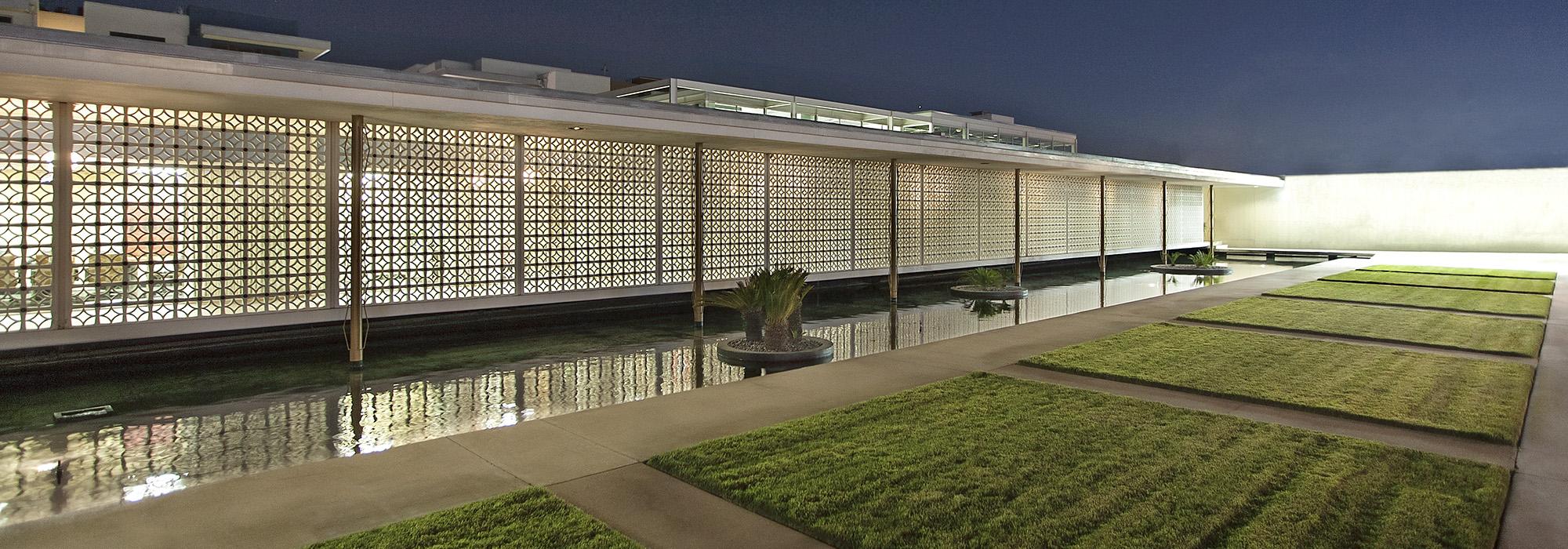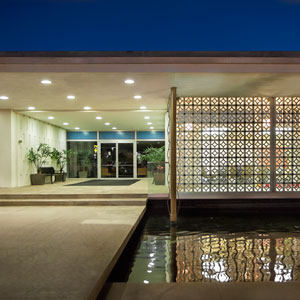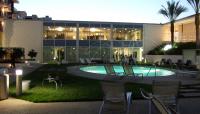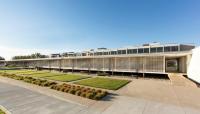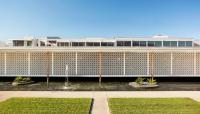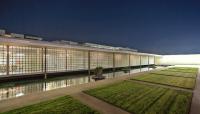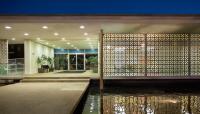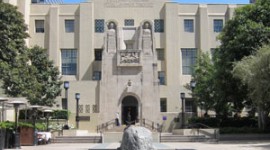Landscape Information
Between 1956 and 1958, the Stuart Company, an independent pharmaceutical distribution company, built a new headquarters on 5.7 acres east of Pasadena’s historic core. Designed by Edward Durrell Stone, the Modernist office development is noted for its white, Persian-inspired arcade formed by a patterned concrete wall and flat roof supported by gold-painted, round, steel columns.
Stone collaborated with landscape architect Thomas Church on the site plan and landscape design. The square, low-rise edifice is set back from the street on a manicured lawn framed with mature palms and ferns. West of the building’s entrance, the patterned arcade cantilevers over a shallow, linear reflecting pool with five jet fountains.
The rectangular rear courtyard, designed as an employee recreation space, is enclosed by a high wall and bordered by a concrete walk set with smooth beach pebbles. It features an elliptical swimming pool, a bathhouse, a conical pavilion flanked by a tall cypress tree, and a lawn area interrupted by long, rectangular, raised beds planted with orange trees.
Since its completion in 1958, relatively few alterations have been made to the building, although a ramp and railings were added to the entrance and additions were made in 1960 and 1970. In 2006, the Stuart complex was adapted for condominiums and in 2011, architect Robert Chattel converted the main building into a performing arts center. The Church-designed landscape remains largely intact, although a shade pavilion was relocated to a nearby park. The complex was listed in the National Register of Historic Places in 1998.



